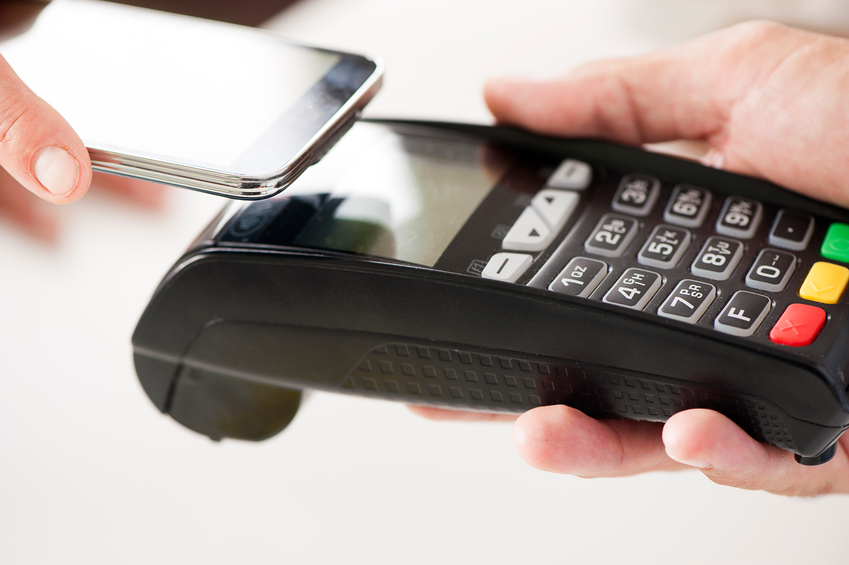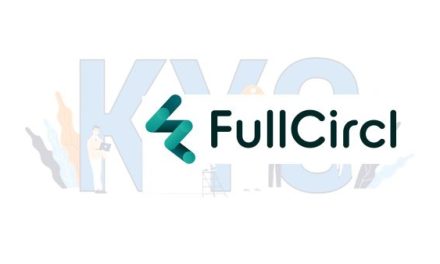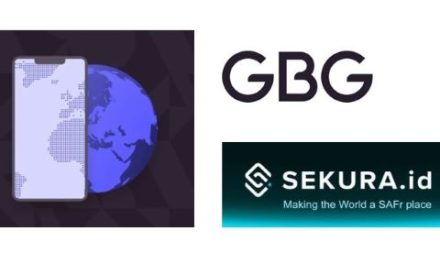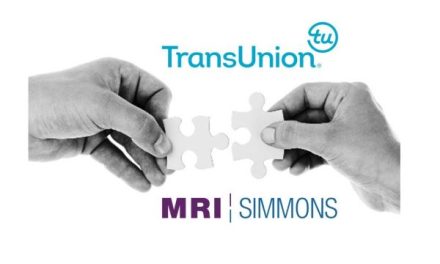 Welcome to episode 12 of the Mobile Payments podcast. I am your host and the editor from Mobile Payments Today, Will Hernandez. Well, thankfully we’re back to a normal episode this week. I’ll be chatting with Hrishi Talwar from Equifax about mobile digital identity as well as one of our editors, Bradley Cooper about recent blockchain developments. It’s not really a payments focused episode this week, but these are topics that you’ll find on Mobile Payments Today from time to time by our news this week.
Welcome to episode 12 of the Mobile Payments podcast. I am your host and the editor from Mobile Payments Today, Will Hernandez. Well, thankfully we’re back to a normal episode this week. I’ll be chatting with Hrishi Talwar from Equifax about mobile digital identity as well as one of our editors, Bradley Cooper about recent blockchain developments. It’s not really a payments focused episode this week, but these are topics that you’ll find on Mobile Payments Today from time to time by our news this week.
The one thing I did want to focus on before we jumped into the Q&A is very payments focused and it’s actually something I came across today as I’m recording this. I’m actually looking into it for an expanded story, so hopefully it’ll be on Mobile Payments Today in the next couple of weeks.
Apparently, Apple is working with merchants in specific Chicago neighborhoods on an Apple Pay promotion. When I saw this, my radar went up because I lived in Chicago for parts of seven years, so I was curious to see what this was all about and this promotion is not exactly a secret. Apple did post this on Twitter and Linkedin promotion page. Basically what’s happening is they are working with merchants in specific Chicago neighborhoods like Lakeview, Wicker Park and the discounts range from anywhere between 10 to 25 percent off the purchase price when using Apple Pay and the merchants are what you’d expect from something like this – coffee, food, some apparel stuff, fans.
My initial reaction when I heard about this was, it just seems like Apple Pay is struggling to gain any kind of long term, consistent use with these kinds of promotions. That’s what I do in these promotions to help get more use and it’s a shame because I think overall as far as the customer experience, Apple is probably the best pay out there. I still think Samsung Pay is a bit more useful because it does have a credit card star rewards program attached to it and you know how people get with their credit card rewards, but that being said, the proximity mobile payments just in general continues to struggle in the U. S despite whatever you’re hearing about a cashless society. Our march toward a cashless society and as a lot of people say in the US at least cards aren’t broken.
Q&A – Hrishi Talwar, Equifax Mobile Strategy Leader
Will: For the weekly Q&A this week we have Hrishi Talwar. He is with Equifax and he specializes in mobile strategy and digital identity. Hrishi, thanks for taking the time to join us this week. How’s everything going?
 Hrishi: Everything’s going well. Thanks for having me on your podcast.
Hrishi: Everything’s going well. Thanks for having me on your podcast.
Will: I mentioned just right now just in terms of what you do, with Equifax in terms of specializing in digital identity. This is something that we’re seeing a lot of these days. There are numerous countries worldwide right now either piloting or implementing digital identity initiatives thanks to government involvement. Of course, when you look at India, that seems to be what thesystem that’s kind of the most well known right now. How does Equifax views these initiatives? How does the company view what’s going on right now in the industry?
Hrishi: We find it very interesting because if you look at the overall government based digital identity systems, the big advantage that governments have is if the systems are built right, they can quickly get mass adoption from their citizens or consumers. One of the things that we have seen in a lot of these systems is they really sort of skipped a couple of generations in terms of how they have evolved over time. The good news is they’re jumping directly from paper or in person identity verification systems directly to digital where the consumer may or may not be involved in managing that identity. So that’s a pretty big leap and a right leap in terms of the direction, but there are a lot of caveats around it, right? As a consumer, when I look at it, the key thing is always going to be around how easy is this system made for me as a consumer to use it, to participate in it, to register for it, right?
Surely it cannot be as complicated, as difficult as some of the in-person, our paper systems that we have today and you know, at Equifax when we started looking at this, we see that as a very positive development primarily because what this is going to do is it’s going to promote consumer education. It’s going to promote consumer adoption and then usage just because of the fact that these systems, these identities are going to be used predominantly in a lot of places. A great example that I give out is if I could start using a digital version of my passport everywhere I went, it would be so much easier for me to not have to carry that document and be concerned about where it is.
Will: Does that matter at this point or is it just a matter of let’s just get this done already? Because this is something that’s been talked about for awhile, and correct me if I’m wrong, we kind of have the technology to get this done. So that it doesn’t matter if it’s government initiated or private and the private company initiated at this point?
Hrishi: No, no, it doesn’t. That would almost say it needs to be both to be one or the other because each one of them is going to look at it from a completely different angle of that identity gets used and it gets used, is going to be determined based on who’s rolling it out and that’s going to greatly influence consumer adoption. The key thing here is it’s so tightly coupled to what the consumer wants to do with their identity that you can build the best mouse trap, but if a consumer does not find it easy to use, it’s just gonna sit there.
Will: Sounds like mobile payments in some aspects. That could be a different discussion, but getting back to this right now, I’m obviously the smartphone is at the center of this whole thing and what should be the role right now with the smartphone and digital identity?
Hrishi: Yeah, that’s a great question. So if you look at how the smartphone usage is involved, you can sit down and look at all the stats. On an average, about 57 percent of the time, a consumer spends on a digital interface or screen is actually the smartphone screen, right? We’re spending about five hours a day of our life on a smartphone and this is five hours of the time and you’re awake, right? So that’s pretty much consuming a third, maybe even almost a half of the amount of time that we are spending out there as human beings.
The other key aspect about smartphones is if you start looking at statistics, you typically notice that your device is not with you less than about four minutes, it continues to shrink. Contrary to that, the average amount of time it takes for a person to find out that they left their wallet is almost about four hours and constantly growing.
But if I left my wallet at home, I can kind of survive pretty much the entire day without it. And so now you’ve got this really strong dependency on the speeds of hardware. It’s always with you and it’s going to really secure because if you think about it, you’re the only one that actually can use it to its full extent. So you’re sitting and seeing this, this really secure enabler of information that’s all is on you. It’s a perfect tool for you to leverage and use as a proxy for your digital identity, more secure than any physical document because you don’t have to leave it with someone. I truly believe that as our digital identity ecosystem continues to evolve, smartphones are going to be a pretty key integral part of that ecosystem.
Will: Let’s talk a little bit about the whole security aspect because we’ve seen some problems in India. Some fraud problems there and some consumers in general have some issues with even using mobile payments on a smartphone because they don’t think it’s secure. Now we might be asking them to put some kind of identity on there which is a lot more sensitive to some people when it comes to security. So what do you make of basically what’s happening in India, what the ad hoc system and then what lessons can other countries learn from these problems and give consumers more peace of mind going forward with what these type of initiatives.?
Hrishi: Yeah, that’s a great question. Well, so the way I look at it, you know, these systems are only as secure as the point of entry into then if I’m signing up and creating my digital identity on a device or on a digital system. The first key point that has to be stressed upon is how strong of a proofing headlines built in there at the time of registration. Because if that’s not done right, then all of the other downstream systems that are relying on this digital identity are susceptible to the security hole, right? Things that we are starting to see with our system in India and I’m sure we will see it pop up in other systems that are starting to go into a deployment across the world. One of the other sort of security holes that we see and some of the other organizations are starting to talk about is, you know, what do we use for two factor authentication to help these digital identity systems?
We all know that our typical two factor authentication around SMS and email is not as secure as we thought it would be. You know, we’ve got to sure that these digital identity systems that are being both are looking at other out of band ways of connecting with the consumer to add that level of confidence around the security that’s both within the system and I think that’s where a lot of these these initial digital identity systems have security holes and they have to keep building on to make consumers feel more comfortable about it.
Will: You have all these different devices that are out there and I don’t know, maybe I’m speaking out of turn, I don’t know. I don’t know somebody who has their identity on an Alexa or something like that. But you know, on a smart watch and things of that nature, I can see that happening. Does security become more complicated and in that environment sometimes, because we have all these systems are out there right now where we’re connected to the Internet and there are more entry points for fraud to happen?
Hrishi: Yeah, absolutely. Absolutely. Right. We’ve got all these different devices, they all can store different types of information. Each one of them comes with their own set of underlying requirements and dependencies. So for us folks that are trying to play within this ecosystem, I think it’s really going to be critical right out of the gate to define what is going to be that standard and how that information can be used on soda devices to begin with, which is why I think your question on smartphones is vaguely relevant. How do we test how that model both from validating the security aspect off the identity system as well as the consumer adoption piece and the education piece? So this does become sort of the mainstream way of consumers controlling that identity and then we can start looking at the other iot devices, right? Kind of a very similar path that we’re seeing mobile payments starting to take in that space.
Will: You mentioned the stats, and I’ve heard those before, if I leave my cell phone at home, I noticed it right away wallet, not. I think playing into that, I think what are the key missing pieces of a true mobile wallet is the digital driver’s license, and this is something I know some states have kind of been looking at and experimenting with and where there were car insurance id with a lot of these insurance companies having that aspect of it. What do you think it’s going to take, at least in the US as far as the US is concerned for states that transition to a digital driver’s license?
Hrishi: I mean we’ve seen some of the states within the US starting to pilot this program. It’s going to be a lot more than just an image of someone’s driver’s license, right? It also is going to greatly influence how the driver’s license is being used for forms of identification. A great example is, you know, I walk up to a bar, I want to prove that I am above 21. I get my driver’s license to the bartender and they’ve got all the information that they know they need to know about me. Including where I am, my weight, my height, things that I probably do not want to disclose to people. Now if I start putting that on a digital version, but then my phone now I’m getting my phone to someone else to look at and what happens if I started getting some personal messages on my phone while that information is being viewed or modified by this individual that’s trying to leverage my digital version of my driver’s license?
So I think that’s where a lot of the privacy concerns are starting to pop up. How people use their driver’s license, for example, on their phone and start using that across different places. And so it will require some work around what happens when the driver’s license is being used. What other privacy controls get introduced into the device. So it can truly be restrictive as well as one of the systems that are going to rely on reading the information off the driver’s license to complete whatever task they want to perform. Because otherwise you’re completely reliant on the human eyes trying to detect that the digital version of the driver’s license is legit and we all know that it has to be a trained eye because fraudsters get pretty damn good getting a fraudulent driver’s licenses board.
Will: I think the ideal scenario, you just described it. Go into the bar with the digital driver’s license, not your wallet, just a phone to not only pay for your drinks, but also prove that you’re able to get the drink. I think that’s probably a good thing for a lot of people out there. One last question before I let you go. What do you think will be some of the key trends in this area of digital identity in the next couple of years? What are some things that Equifax is looking at right now?
Hrishi: So there are a couple of trends that we truly believe are going to start blossoming. The big one that I see becoming relevant as we go down the road is going to be the rise of biometrics. Things that are taking away from the watch concept which is typically, you know, things that we rely on today, username, passwords, a secret questions, things like that to something that’s more tangible that truly identifies you as an individual and is unique enough that the print is going to be able to distinguish between two people. Even if they have the same name, they look alike, live in the same address, but we know that their biometric signatures are going to be different. So that distinction is going to become very, very critical as we start going into the digital identity space.
And that’s why biometrics is going to be key. The other thing that I think is going to take off his is more around a risk or trust based access, which is to really, really promote how consumers adopt and start using these systems. And what I mean by that is depending upon the trust that is associated with an identity with an individual and depending upon the risk of what the consumer is trying to do. We will start seeing a wide variety of experiences that consumers go through. Some that’ll be very seamless and some that will be very, very full of friction. And so it’s going to be very important for us to find that balance and start almost creating sort of a trust network. And I always use that reference of if I were to meet someone I’ve never met before, I’m always a little bit more reserved.
But if a friend of mine comes in and introduces me to someone I’ve never met before, but through the introduction I feel a lot more comfortable, a lot more open in interacting with this individual. And the reason why there was a shift in behavior is because I have a trust network with my friend that’s introducing me to some other entity or some other individual. So establishment of the trust network is going to be very, very critical and we’ll start seeing it become more and more prevalent because that’s going to drive that seamless experience which is going to promote adoption,
Will: In terms of something like identity or fraud or anything like that. Do you think, do you think companies can do that right now? I mean, how difficult do you think that’s going to be going forward?
Hrishi: I think it’s going to be a learning curve around getting it right and that’s why when you asked me the question, should this be something that comes from the private sector, from the public sector? I think it’s going to be both because we’ll start off by expecting different experience for different kinds of things that we’re doing and as the consumer education becomes more and more prevalent, as people get more and more comfortable with that concept, that’s when we will seeing that mass adoption. That’s when we’ll start seeing a removal of friction. It’s almost necessary because all of the checks that have happened and introduction of fiction where it has to be there just because the consumers really trying to do something that is high risk.
Will: Well, this is all very fascinating and I love talking about this stuff, especially when we’re talking about making a identity as digital as possible when you’re talking about passports and drivers licenses. So thanks for coming on with us this week and hopefully we will talk some more down the line.
 Hrishi: Absolutely. Well thank you for having me and and I echo your sentiment. I think this is a very exciting, exciting space to be in and we as Equifax or looking at.
Hrishi: Absolutely. Well thank you for having me and and I echo your sentiment. I think this is a very exciting, exciting space to be in and we as Equifax or looking at.
Source: ATM Marketplace


























